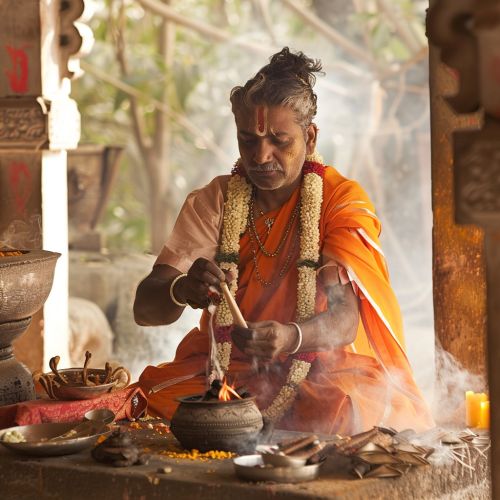Brahmin
Introduction
The term "Brahmin" refers to a member of the highest caste or varna in the traditional Hindu caste system. Brahmins are traditionally priests, scholars, and teachers, tasked with preserving and transmitting sacred knowledge. This article delves into the historical, cultural, and social aspects of Brahmins, providing a comprehensive understanding of their role and significance in Indian society.
Historical Background
Vedic Period
During the Vedic period, Brahmins were primarily responsible for performing rituals and sacrifices. The Vedas, the oldest sacred texts of Hinduism, were composed and transmitted orally by Brahmins. The Rigveda, the oldest of the Vedas, contains hymns that were recited during rituals. Brahmins were considered the custodians of these texts and were responsible for their accurate transmission across generations.
Post-Vedic Period
In the post-Vedic period, the role of Brahmins expanded beyond ritualistic duties. They became advisors to kings and played a significant role in the administration of kingdoms. The Manusmriti, an ancient legal text, outlines the duties and responsibilities of Brahmins, emphasizing their role in teaching and maintaining social order.
Social Structure
Varna System
The varna system is a hierarchical social structure in Hindu society, divided into four main categories: Brahmins, Kshatriyas, Vaishyas, and Shudras. Brahmins occupy the highest position in this hierarchy. The varna system is distinct from the jati system, which refers to the myriad sub-castes within each varna.
Jatis within Brahmins
Brahmins are further divided into numerous jatis, or sub-castes, each with its own customs and traditions. Some of the prominent Brahmin jatis include:
- Saraswat Brahmins
- Gaur Brahmins
- Iyer and Iyengar Brahmins (Tamil Nadu)
- Namboothiri Brahmins (Kerala)
Religious and Ritualistic Roles
Brahmins are traditionally associated with various religious and ritualistic roles, including:
Priestly Duties
Brahmins perform puja (worship) and other religious ceremonies in temples and homes. They are also responsible for conducting samskaras, or life-cycle rituals, such as naming ceremonies, weddings, and funerals.
Teaching and Scholarship
Brahmins have historically been scholars and teachers, imparting knowledge of the Vedas, Upanishads, and other sacred texts. They also played a crucial role in the development of various schools of Hindu philosophy, such as Vedanta and Mimamsa.


Cultural Contributions
Brahmins have made significant contributions to Indian culture, particularly in the fields of literature, music, and art.
Literature
Many classical Sanskrit texts, including epics like the Mahabharata and the Ramayana, were composed by Brahmins. They also contributed to the development of regional languages and literature.
Music and Dance
Brahmins have played a pivotal role in the development of classical Indian music and dance forms. For instance, the Namboothiri Brahmins of Kerala have been instrumental in preserving the Kathakali dance form.
Modern Context
Socio-Economic Status
In contemporary India, the socio-economic status of Brahmins varies widely. While some Brahmins continue to hold influential positions in academia, politics, and business, others face economic challenges. The reservation system in India, aimed at uplifting historically disadvantaged communities, has also impacted the socio-economic dynamics of Brahmins.
Criticism and Controversies
The Brahmin community has faced criticism for its role in perpetuating the caste system and social inequalities. Reform movements, such as the Bhakti movement and the Dalit movement, have challenged the traditional authority of Brahmins.
